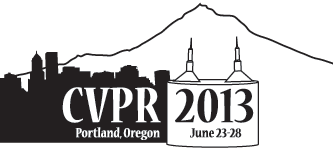-
Relative Hidden Markov Models for Evaluating Motion Skill
AbstractThis paper is concerned with a novel problem: learning temporal models using only relative information. Such a problem arises naturally in many applications involving motion or video data. Our focus in this paper is on videobased surgical training, in which a key task is to rate the performance of a trainee based on a video capturing his motion. Compared with the conventional method of relying on ratings from senior surgeons, an automatic approach to this problem is desirable for its potential lower cost, better objectiveness, and real-time availability. To this end, we propose a novel formulation termed Relative Hidden Markov Model and develop an algorithm for obtaining a solution under this model. The proposed method utilizes only a relative ranking (based on an attribute of interest) between pairs of the inputs, which is easier to obtain and often more consistent, especially for the chosen application domain. The proposed algorithm effectively learns a model from the training data so that the attribute under consideration is linked to the likelihood of the inputs under the learned model. Hence the model can be used to compare new sequences. Synthetic data is first used to systematically evaluate the model and the algorithm, and then we experiment with real data from a surgical training system. The experimental results suggest that the proposed approach provides a promising solution to the real-world problem of motion skill evaluation from video.
Related Material
[pdf][bibtex]@InProceedings{Zhang_2013_CVPR,
author = {Zhang, Qiang and Li, Baoxin},
title = {Relative Hidden Markov Models for Evaluating Motion Skill},
booktitle = {Proceedings of the IEEE Conference on Computer Vision and Pattern Recognition (CVPR)},
month = {June},
year = {2013}
}
These CVPR 2013 papers are the Open Access versions, provided by the Computer Vision Foundation.
Except for the watermark, they are identical to the accepted versions; the final published version of the proceedings is available on IEEE Xplore.
Except for the watermark, they are identical to the accepted versions; the final published version of the proceedings is available on IEEE Xplore.
This material is presented to ensure timely dissemination of scholarly and technical work.
Copyright and all rights therein are retained by authors or by other copyright holders.
All persons copying this information are expected to adhere to the terms and constraints invoked by each author's copyright.

